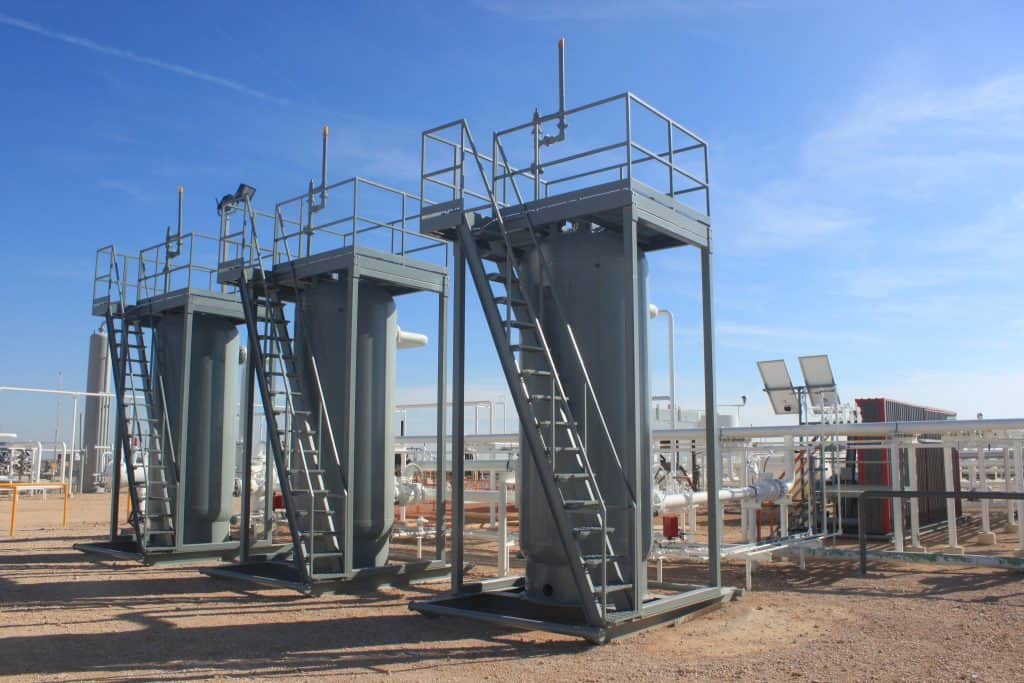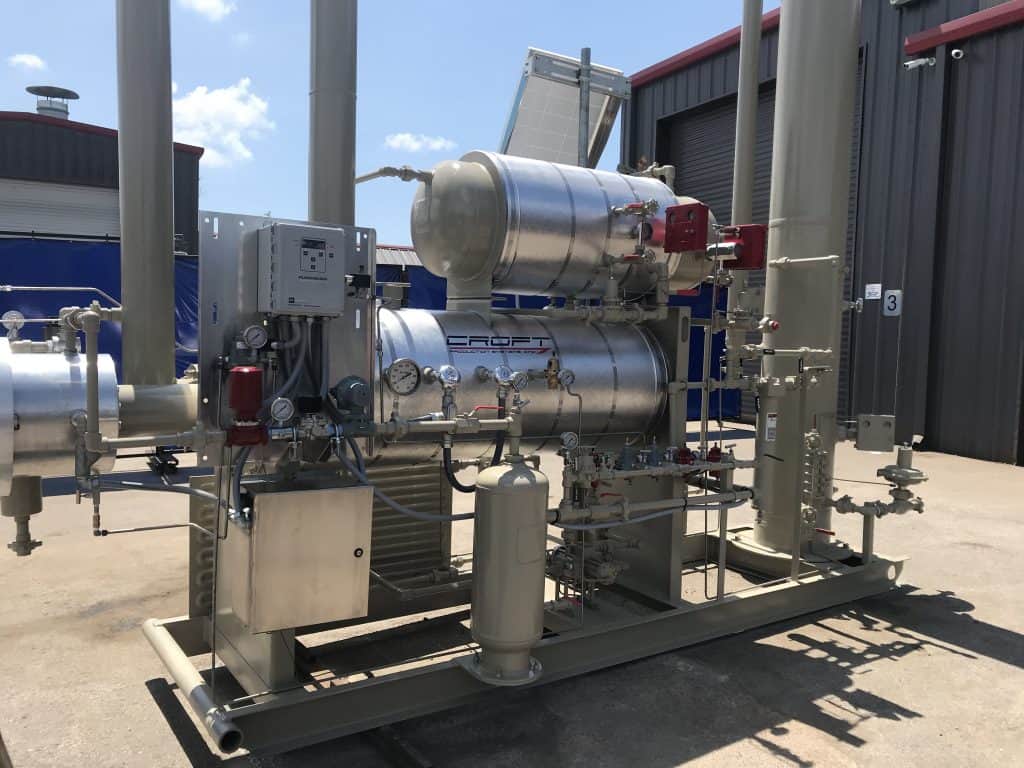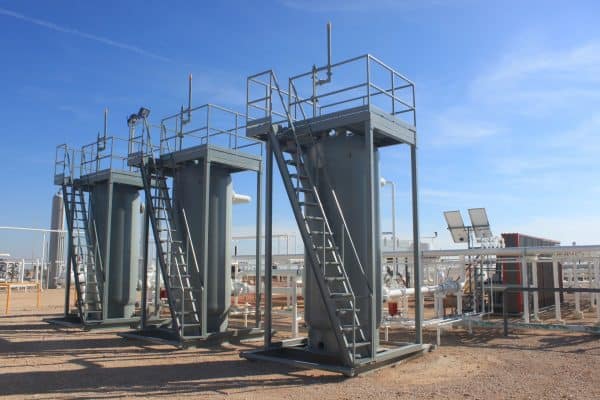Raw natural gas must be dehydrated to remove water vapor. Natural gas dehydration will eliminate the formation of hydrates and over-saturation of natural gas. All of these issues can cause corrosion, impacting the longevity of your gas processing equipment, and cause the gas stream to not meet pipeline specifications.
What are hydrates?
Hydrates are solid, ice-like crystallized compounds formed of hydrocarbons and water. Hydrate formation occurs in high-pressure well streams with a low temperature. Hydrates can form, however, at temperatures above the freezing point. Hydrates cause freezing and blocking of pipelines, valves, and other equipment, bringing production to a halt
When is natural gas “over-saturated”?
Gas is considered “over-saturated” when it does not meet pipeline specifications of 7 pounds per mmcfd. Wet gas is a common issue, that is treated with glycol dehydrators such as a TEG, or a solid desiccant dehydrator, such as CROFT’s Passive Dehydration System.
What effect does Temperature have on water content?

The temperature and pressure determine whether water is in a gaseous state or has condensed into a liquid. The hotter the gas is, the more water content will be present which can lead to your processing equipment being overworked and corroded. Cooling natural gas is crucial component of natural gas processing, especially here in Texas. In the summer month, you will often see natural gas coolers such as ambient coolers and forced air coolers in use.

Dehydration, the removal of water vapor from natural gas, can be done by either adsorption or absorption with a gas dehydrator, also referred to across the industry as a dehy unit.
Adsorption occurs when substances adhere to another surface. Croft’s PDS uses an adsorption process with the use of our specially formulated solid desiccant, enviroDRI. Solid desiccant dehydrators have a high adsorptive capacity, a low resistance to gas flow to minimize pressure drop, is both non-flammable and non-corrosive, and is inexpensive.

Absorption occurs when a substance is taken by another substance in a solid or liquid material, such as glycol. TEG units dehydrate by absorption, which uses a glycol liquid desiccant to remove the water vapor. CROFT’s TEG design encompasses the best practices across the industry to provide clients with an efficient, operator-friendly glycol dehydrator.
Request a quote for a gas dehydrator.
UPDATED MAY 2020 BY A CROFT REPRESENTATIVE












